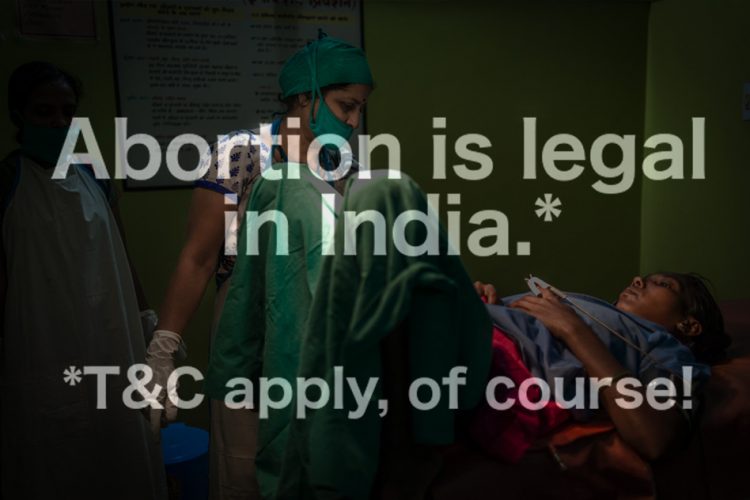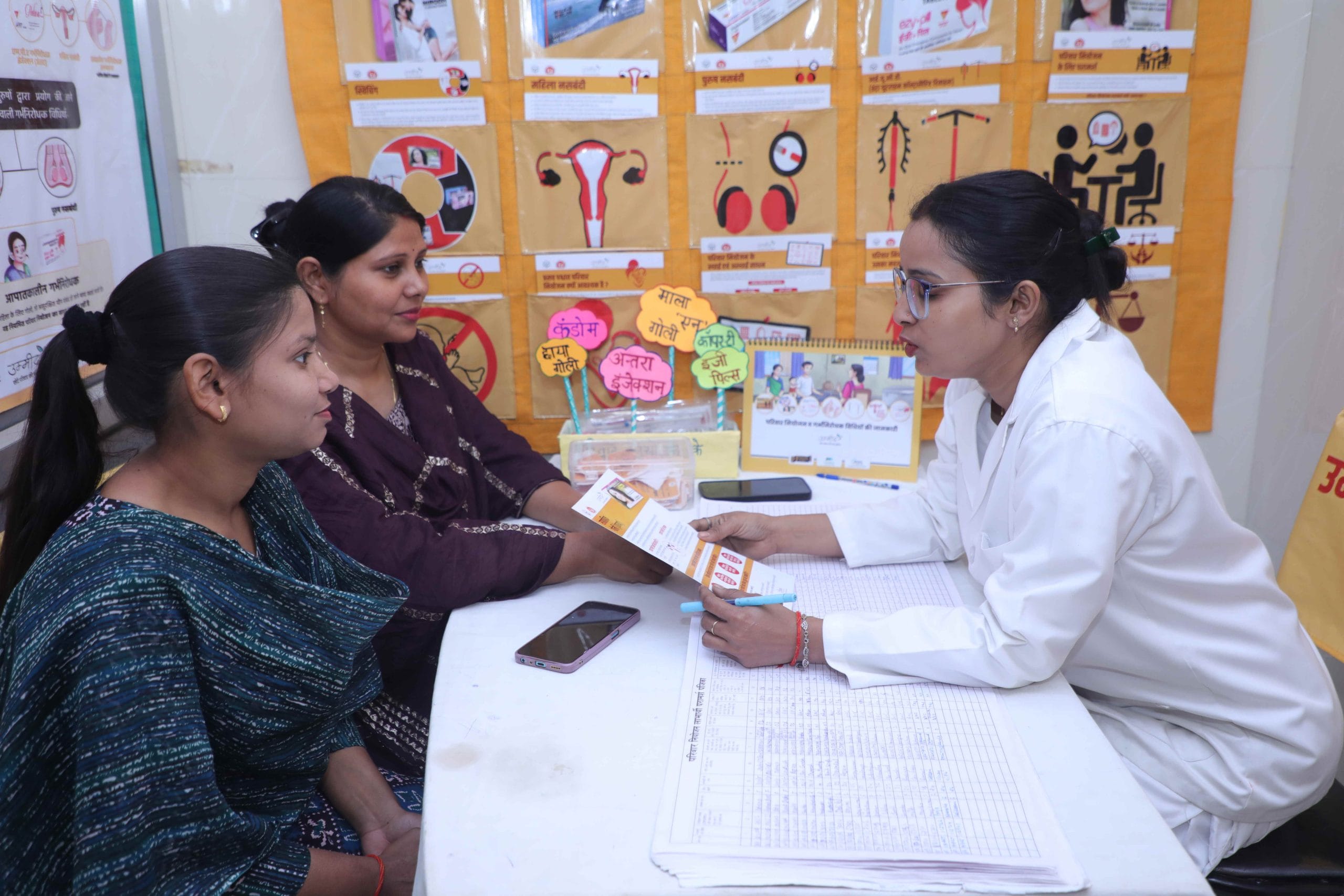Four decades after the legalisation of abortion, poor women in India still do not have access to safe abortion services. Part of addressing this challenge requires an understanding of the legal framework for liberalising abortion, starting with the MTP Act of 1971, the subsequent shifts in context. We attempt to do this by focusing on the Act itself and its shortcomings, and calling attention to other challenges to the regulatory framework.
The following is excerpted from the speech given by Dr Saroj Pachauri on the occasion of the Global Health Strategies meeting held on the 24th of November, 2017 in New Delhi, India.
Despite the MTP Act, unsafe abortions far outnumber safe, legal procedures. Parts of these concerns were sought to be addressed through the amendment of the MTP Act towards which considerable research and advocacy were dedicated.
The MTP Amendment Act of 2002 decentralised the regulation of abortion facilities from the State to District Level Committees. It also allowed Registered Medical Practitioners to provide medical pill abortions up to 7 weeks of pregnancy in a facility approved for providing abortion services.
While these efforts to amend the MTP Act were underway, simultaneously, other abortion-related processes complicated the picture, creating new barriers to safe abortion care.
A second round of amendments was proposed under the MTP Bill of 2014, which attempted to further liberalise the Act. It proposed an extension of permissible abortions from 20 to 24 weeks, and an exception to the time limit for termination in case of fetal abnormalities. It also proposed approval for Ayurvedic, Homeopathic, Yunani, and Siddha practitioners to carryout medical abortion.
However, in May 2017 the Prime Minister’s office sent the Bill back to the Ministry of Health and Family Welfare with the recommendation to strengthen the draft, and the recommendations remain un-tabled.
While these efforts to amend the MTP Act were underway, simultaneously, other abortion-related processes complicated the picture, creating new barriers to safe abortion care.
The first of these was the furore around the issue of sex-selective abortions, which also captured a large media following. A result of this agitation was the Pre-Conception and Prenatal Diagnostic Techniques (PCPNDT) Act, passed in 1994.
Second, stemming from concern for child sexual abuse the more recent Protection of Children from Sexual Offences (POCSO) Act was passed in 2012.
Also read: Debunking Abortion Myths About Mothers On Mother’s Day
There are serious conflicts in the framing of the MTP Act, the PCPNDT Act, and the POCSO Act. This is made worse by the fact that there is a lack of clear understanding of these Acts, not only among the users of services, but also among government officials (gatekeepers), and the providers of services.
For instance, officials carrying out stringent inspections to curb sex determination, end up clamping down on MTP Centers and gynaecologists legally qualified to provide abortion services. This has led to many qualified practitioners now being guarded in providing abortion services, especially during the second trimester, posing a major challenge to women trying to access services.
Similarly, the POCSO Act was passed to strengthen legal provisions for the protection of children below 18 years of age from sexual abuse and exploitation. Under this Act, if any girl under 18 is seeking abortion in India, the service provider is compelled to register a complaint of sexual assault with the police. Consequently, service providers are hesitant to provide abortion services to girls under 18. Given that in this country some 45%-47% of girls get married under 18 years of age, this presents a huge problem. Thus, it is evident that the implementation of these Acts has unfortunately become major barriers to the effective implementation of the MTP Act resulting in further limiting access to safe abortion services in India.
Clearly, there is an urgent need to strengthen the MTP Act, and review and amend the conflation among the three Acts. And most importantly, to improve the understanding of the users, providers, gatekeepers, and all stakeholders of these three Acts.
The passing of the Medical Termination of Pregnancy Act in 1971, was a landmark in the legalisation of abortion in India. The act was the culmination of a decade’s worth of public debate that started in the early 1960s and led to the setting up of the Shanti Lal Shah Committee. The Committee submitted a positive report on the need to liberalise and legalise abortion, and resulted in discussions of appropriate regulatory frameworks and laws. The unanimously adopted MTP Act of 1971 is a result of that debate.
The MTP Act of 1971 permits the termination of pregnancy in the following two cases:
- Where continuation of the pregnancy would involve a risk to the life of the pregnant woman or grave injury to her physical or mental health; and
- Where substantial risk exists of the child being born with serious physical or mental abnormality.
Further, pregnancy caused due to rape or due to the failure of contraceptive methods also falls under the ambit of the Act, as the “anguish caused by such unwanted pregnancy may be presumed to contribute a grave injury to the mental health of the pregnant woman.”
Since the Indian Penal Code criminalises abortion, this Act served to allow exceptions under certain conditions.
Also read: Why We Need To Get Rid Of Abortion Stigma | #AbortionMeraHaq
The origin of the MTP Act and the changes in regulatory controls on abortion stemmed initially from concerns about high maternal mortality in India, and the process was led by the medical community. Thus, the MTP Act is a highly medicalised Act.
Its twin objectives were:
- The liberalisation of the grounds on which abortions were possible, and
- Strict controls for the conduct of the procedure, which would ensure that only legally recognised, skilled medical practitioners could provide it.
However, despite the presence of such a liberal law, at least 60% of all abortions seem to be conducted outside the legal system. The question remains, why?
When the MTP Act was passed, the legal context was NOT the Government’s recognition of women’s rights to control their own sexuality, fertility, and reproduction, which, arguably, it is today
Part of the explanation lies in the fact that although the law was conceptualised in the interest of women, and with the full support of the medical community, it relied on a vision of a far too idealistic healthcare system, rather than what was available in reality. On the ground, healthcare service provision was far less organised and regulated than what was assumed.
Moreover, the Act while liberal in its mandate, has several restrictions that relate to who can provide abortion services and where; abortion services can be provided by a Registered Medical Practitioner, at a registered facility, within 20 weeks of pregnancy. Consequently, one of the impacts of the rules and regulations drawn up under the MTP to safeguard women strangled the growth of services.
Furthermore, the context for the delivery of reproductive health services for women has changed significantly over the past decades. When the MTP Act was passed, the legal context was NOT the Government’s recognition of women’s rights to control their own sexuality, fertility, and reproduction, which, arguably, it is today.
Thus, the ideological underpinnings of the concept then and now are radically different.
Also read: What Stops Women From Accessing Safe Abortion? | #AbortionMeraHaq
Therefore, despite being a landmark in social legislation in 1971, the MTP Act has failed to translate into reality for the majority of Indian women, particularly the rural poor.
This piece was originally published in the ASAP blog and has been republished here with permission.
Featured Image Source: The Logical Indian
About the author(s)
Asia Safe Abortion Partnership (ASAP) is an abortion rights advocacy organization committed to capacity building at the regional level by connecting and boosting the work of abortion rights activists across Asia in the form of workshops, conferences and small grants.




